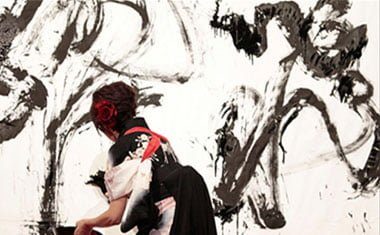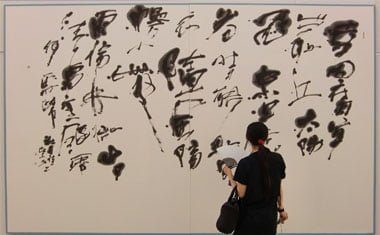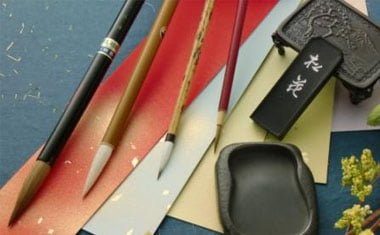The japanese calligraphy (書 道, shodō) is one of the most popular arts in Japan. Japanese calligraphy works are appreciated just like a painting, but this type of art has a philosophical sense. In itself, calligraphy is the beauty of writing. A teacher can create a work of art with a bamboo brush and rice paper. This activity transfers harmony and beauty. The parity of the simplicity and grace are embodied in works of Japanese calligraphy as one of the principles of Japanese aesthetics known as wabi sabi.
Like many practices in Japan, the shodō came from china along with the writing system, around the 6th or 7th century. At that time writing was an important art that had to be mastered by members of the nobility. As time passed, art spread among the middle classes as well, and today it is not only an art, but is used in important events, when writing New Year’s letters or in other events of daily life.

As the ikebana and the tea ceremony, the shodō It is a heritage of Zen Buddhism. At shodō there are no coincidences. The beginning, the direction, the shape and the ending of the lines, and the balance between the elements is important for each stroke, and even the blank spaces are deliberately left. Furthermore, Japanese calligraphy is not only about the beauty of writing, but also about the transmission of ancient knowledge.

Since they are in primary, the Japanese learn the basics of calligraphy. At the beginning of each school year, children get together to participate in an activity known as kakizome, where they create works of calligraphy that symbolize their wishes for the new year. Students practice their writing to improve their writing, sometimes copying works of famous writers of the past. Some elementary and middle school students even go to special schools to perfect their art.

Unlike the strokes of the roman alphabet, the strokes of the Japanese characters must be drawn in the correct order, not arbitrarily. This is called kaisho. However, in the day to day other forms of writing that are faster are used, in which the kanji they are less legible, as when writing quickly in the Roman alphabet. These two styles are known as “semi-cursive” (gyōsho) and “italics” (sōsho).

The instruments used for the shodō are:
- Shitajiki (下 敷 き): A soft black mat. Provides a smooth and comfortable surface.
- Bunchin (文 鎮): A metal bar that serves as a paperweight.
- Hanshi (半 紙): A thin paper that is used especially for Japanese calligraphy.
- Fude (筆): Brush. A thicker brush is used for the main characters and a smaller one for the artist name. However, the smaller brush can also be used for characters.
- Suzuri (硯): A heavy black container where ink is deposited.
- Sumi (墨): It is a solid black material that should be rubbed with water on the suzuri to produce the black ink that is used for writing. There are also cans of instant ink.
